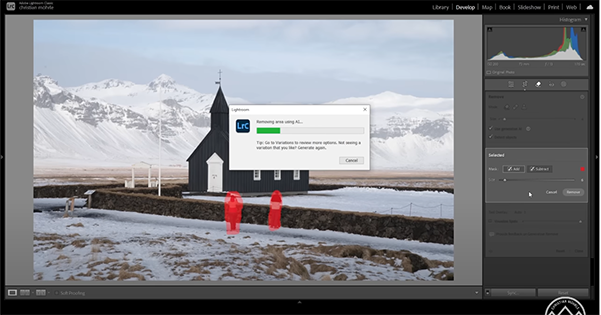How to clean your front door according to Feng Shui – remove negative energy and tick off a cleaning task in one go
Make positive energy feel like a welcome guest in your home
 REAL ESTATE
REAL ESTATE
 REAL ESTATE
REAL ESTATE
 REAL ESTATE
REAL ESTATE
 REAL ESTATE
REAL ESTATE
 REAL ESTATE
REAL ESTATE
 EVENT
EVENT
 LANDSCAPE
LANDSCAPE
 LANDSCAPE
LANDSCAPE
 CONCERT
CONCERT
 LANDSCAPE
LANDSCAPE
 TRAVEL
TRAVEL

REAL ESTATE
Residential, Commercial, Interiors

LANDSCAPE
Landmarks, Cityscape, Urban, Architectural

FOOD
Hotels, Restaurants, Advertising, Editorial

PORTRAIT
Traditional, Glamour, Lifestyle, Candid

PRODUCT
Studio, Lifestyle, Grouping

EVENT
Conference, Exhibition, Corporate

FASHION
Portrait, Catalog, Editorial, Street

TRAVEL
Landscape, Cityscape, Documentary

SPORT
Basketball, Football, Golf

CONCERT

STILL

STREET
We’ve all had the misfortune of capturing a seemingly great image, only to realize later that the shot includes a distracting element, or we failed to notice someone walking through the frame. At this point, unfortunately, it’s often impossible to go back for a redo.
There are several ways to remove unwanted clutter, some more complicated and less effective than others. Today’s tutorial from the PHLOG Photography YouTube channel demonstrates how to get the job done to perfection with a few quick clicks in Lightroom.
Instructor Christian Mohrle is a highly respected German photographer and post-processing expert who you’ll recognize if you’re a regular Shutterbug reader. His goal for today is to remove two people standing in front of a church in the middle of a beautiful landscape scene with snowcapped peaks looming in the distance.

Mohrle quickly banishes the bystanders and then demonstrates a straightforward workflow for significantly enhancing the shot by applying several basic adjustments, a bit of masking, color grading and sharpening. We therefore suggest downloading his sample Raw file from the link beneath the video so you can follow along and do everything yourself.
The first step is heading into Lightroom’s Remove tool panel that provides a number of options. Mohrle typically chooses the Healing Bruch do get rid of sensor spots and other small things, but his preference for more complex objects clicking on the Remove mode icon instead.
Once you’re in the Remove mode it’s important to select Generative AI “which will get rid of objects more easily.” Mohrle also activates Detect Objects. Then he chooses an appropriate brush size and paints roughly over the people to be eliminated. Mohrle notes that “it’s important to leave a little bit of room around an object, so there’s no need to be too precise.”

Then click on the Remove button on the right side of the workspace, and BOOM—after a brief wait the people are gone. Lightroom offers three different variations, so if you’re not satisfied with the first result try one or both of the others.
Mohrle now has a distraction-free image and it’s time to apply the global and selective enhancements mentioned above. It’s a reliable workflow that you can employ for processing a wide variety of outdoor images.
The popular PHLOG Photography YouTube channel is a great resource for everyone who shoots in the in the field. We also suggest watching a tutorial we featured recently with another post-processing expert who demonstrates seven overlooked Lightroom tools that will speed up your Lightroom workflow and enhance every image you edit.
Focal length is one of the most essential concepts in photography, and a firm understanding of how it works is crucial when choosing the proper lens for a specific scene. Most photographers know that focal length determines the magnification of a subject within the frame, but there’s more to consider than this.
Today’s tutorial from the Hamed Photography YouTube channel will get you up to speed in barely four minutes so you’ll always reach for an appropriate lens based upon subject matter, prevailing light levels, and the specific mood or effect that you want to convey.
Hamed begins with a quick overview of the concept, explaining that “focal length is the distance (expressed in millimeters) between the optical center of a lens and the camera’s image sensor when the subject is in focus.” So it directly affects both angle of view (how much of a scene is captured), and magnification (how large individual elements will appear within the frame).

These considerations hold true whether you’re shooting with a prime lens or when selecting a specific focal on a zoom. As Hamed says, “a shorter focal length provides a wide angle of view and less magnification, while a longer focal gives a narrower angle of view with greater magnification.
But there’s still more to consider, which Hamed reveals by breaking down lenses into various categories. By his definition ultra-wide lenses range in focal length from 8-24mm and they’re often used for architecture, landscapes and interior photography. Their characteristics include strong perspective distortion—whereby the size of objects closer to the lens is exaggerated.
Conventional wide angle lenses (from 24-35mm), on the other hand, are ideal for street photography, travel, and environmental portraiture because they can capture a broad area
while maintaining a natural perspective. A standard 50mm lens in comparison has a field of view similar to what you see with your eyes and delivers a “balanced perspective” in which subjects appear natural and undistorted.

The discussion continues with a description of short telephotos (85-135mm), medium to long telephotos (135mm–300mm) and the “big guns” with focal lengths of 300mm and more that wildlife photographers use to isolate subjects at a distance. In every case Hamed explains the benefits and drawbacks, appropriate applications, and the characteristics you can expect to see in your imagery.
There’s much more to learn about gear and shooting techniques on the Hamed Photography You Tube channel.
And speaking of lenses, but sure to watch the recent tutorial we featured with another accomplished pro who demonstrates how he captures attention-grabbing photographs by using a few affordable lens filters when shooting landscapes, nature scenes, and wildlife subjects.

The Sharp Frame Media team firmly believes in evolving to meet our clients’ needs. We decided it was time to simplify our media packages so they’re easier to choose and easier to customize. That’s why we’ve restructured our pricing and packages to better reflect the way modern agents work, and now, our updated approach simplifies the booking process while delivering more value every single time.
Previously, our packages were structured by photo count. You might remember them as The Basic, The Just Right, and The Moving On Up, including 15, 25, or 40 photos. While that worked in the past, we’ve realized that agents today need more than just a set number of photos. They need a complete media solution that fits their listing goals.
Perfect for straightforward listings that need high-quality visuals. This is a solid option if you want professional photos with a Basic Floor Plan included, blue skies guaranteed, and a free property website.
Ideal for agents who want a little more. You’ll get 25-40 photos, 2-3 aerials, plus a Zillow 3D Tour (with a floor plan!) to elevate the listing experience. This package is ideal for agents wanting to increase engagement and take advantage of Zillow’s powerful Showcase experience.
(Bonus: We’ll handle uploading your media directly through the Zillow Showcase platform for you.)
This is our most comprehensive option. Photos, a Cinematic 90-120 Second Property Video with Agent Intro and a Social Media Reel cut, 5-7 aerial photos, a Detailed Floor Plan, one Virtual Dusk photo, blue skies guaranteed, and a free property website. This package is meant for homes that deserve the spotlight. You can call it the all-in-one marketing suite for high-end or unique properties that demand top-tier presentation.

Yes! Every package now comes with a floor plan. Why? Because buyers love them, and they help listings stand out: more clicks, more engagement, and more qualified leads. And don’t worry, we still offer different floor plan styles depending on your listing’s needs. If you want to upgrade or personalize it further, we’ve got you covered.
We wanted our offerings to match what agents are really using. With so many agents leaning into tools like Zillow Showcase and virtual tours, our goal was to make it easier to bundle the tools that work. No overthinking, no confusion.
Zillow reports that listings with floor plans receive 52% more clicks, and 3D Home tours increase time spent on listings and engagement. These tools are no longer “extras”; they’re essentials in a competitive market. That’s why we’ve built them into our core packages so you don’t have to worry about missing out.
Enhancing Whether you’re listing a cozy condo or a luxury estate, our new packages are designed to give you everything you need to market it effectively. We’ve taken out the guesswork so you can focus on what matters: closing deals faster and impressing your clients.
We’re always here to help you choose the best package for your listing and customize it if needed. If you ever have questions (or just want to talk strategy), don’t hesitate to reach out.
Have questions about the new packages or need help choosing the right one? We’d love to help! Visit www.SharpFrameMedia.com or contact us today to assist you at every step. Let’s make 2025 your best year yet.
Here are other related topics that might interest you:
Sharp Frame Media is a 5-star rated real estate media agency servicing Dallas-Fort Worth, and surrounding cities in Texas. Founded in 2015 on the values of craftsmanship, service, and partnership. As a veteran-owned company, our mission is driven by our commitment to unmatched service.
Want to Learn More About Sharp Frame Media?
The post We’ve Upgraded Our Media Packages: Here’s What’s New At Sharp Frame Media appeared first on Real Estate Photography in Dallas-Fort Worth.
